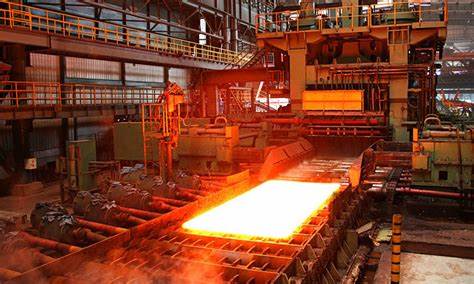Fire resistant hydraulic fluids
Fire resistant hydraulic fluids – When there is the possibility of a fluid for use in hydraulic systems coming into contact with an ignition source or very hot metal surface of an equipment, fire-resistant hydraulic fluids can be used in these situations. The potential risk of fire from hydraulic fluid leakage exists in applications where hydraulic systems are located near pressure casting, continuous casting, steel lamination, furnaces, forging presses, etc.
Electro-hydraulic controls (EHC) used to regulate the supply of steam to turbo-generators are applications where high pressures and high temperatures require the use of fire-resistant fluids as a way to reduce the potential for hazardous and costly fires.
Phosphate esters are the fluids most commonly used in electro-hydraulic controls (EHC) in steam turbine regulation systems. However, many other types of fire resistant fluids can be used in a variety of applications. Since not all fire-resistant fluids are compatible with each other, special care should be taken when replacing one fire-resistant fluid with another.
Click on the image that follows and read the article “Fire resistant hydraulic fluids” in the digital magazine “LUBES EM FOCO – issue 85” :
But what is a fire-resistant fluid? Fire-resistant fluids are specially formulated lubricants to resist ignition much better and not propagate a flame from an ignition source. Fire-resistant fluids should not be confused, however, with fireproof fluids seen as they can ignite and maintain a flame under specific conditions.
There are several types of fire resistant fluids and they are generally classified as follows:
-
- Oil emulsons in water.
- Polymer and water solutions.
- Synthetic anidros.
The International Standards Organization (ISO) classifies fire-resistant fluids as follows:
-
- HFAE: water emulsions in oil with typical more than 80% water content.
- HFAS: synthetic aqueous fluids with typical more than 80% water content.
- HFB: water emulsions in oil with typical more than 40% water content.
- HFC: polymer solutions in water with typical more than 35% water content, also known glycol solutions, polyalkylene glycol solutions or water and glycol solutions.
HFDR: synthetic anhydrous fluids composed of phosphate esters. - HFDU: synthetic anhydrous fluids other than phosphate esters (e.g. ester polyols, polyalchiliene glycols, etc.).
What if there is a need to convert to fire-resistant fluids? Detailed procedures are available for most situations.
The International Standards Organization (ISO) describes, in particular, the conversion to 04 situations:
-
- Conversion of a mineral-based oil to a water-based fire-resistant fluid (HFAE, HFB or HFC).
- C oversion of a mineral-based oil for synthetic anhydrous fire resistant fluid (HFDR or HFDU).”
- Give a water-based fire-resistant fluid (HFAE, HFB or HFC) for synthetic anhydrous fire resistant fluids (HFDR or HFDU).
- De synthetic anhydrous fire resistant fluids (HFDR or HFDU) for water-based fire resistant fluids (HFAE, HFB or HFC).






















